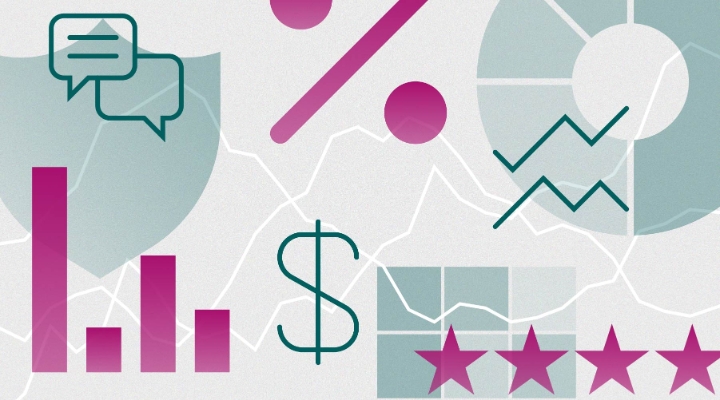JPM Emerging Markets Income
The Silver-rated JPM Emerging Markets Income (JEMI) has strong features including capable leadership, deep analytical resources, and a structured and well-codified approach.
The strategy is led by experienced investor Omar Negyal, who is backed by wide resources at JP Morgan. The manager focuses on quality and an overall dividend yield of 130% of the MSCI EM index. For any holding, Negyal must gain comfort with a firm’s returns on equity, free cash flow, and dividend policy before investing, as this ensures that the dividend is sustainable and likely to grow over the long term. Indeed, the strategy does consistently have higher returns on equity than the index.
Given the focus on value and quality here, the strategy is expected to perform well in a broad market driven by fundamentals, as well as in down or moderately rising markets; conversely, it is expected to lag in high-growth markets given lower beta. For example, the quality tilt helped the strategy to mitigate some relative downside in 2020, while the value bias and underexposure to internet names contributed positively in 2021-22. Overall, the balanced approach with a focus on quality should help the strategy to outperform over the cycle. The strategy’s long-term track record is strong over Negyal’s tenure.
JOHCM Global Emerging Markets Opportunities
The Silver-rated JOHCM Global Emerging Markets Opportunities strategy benefits from experienced managers and a differentiated top-down approach.
Managers James Syme and Paul Wimborne have worked together since 2006 (first at Barings, then JOHCM since 2011). As a duo they have therefore cemented a stable and established co-manager structure. In January 2022, Ada Chan, who has been part of the team since 2016 as a dedicated senior analyst, was promoted to the role of fund manager.
Unlike many peers, this investment approach is driven by top-down analysis of the 26 countries making up the MSCI EM Index. The managers continue to use the framework employed at their previous house, producing an overall score for each country and views on the attractiveness of various characteristics. At the stock level, the investment style is growth-at-a-reasonable-price (GARP). Managers are evaluating stocks for their value and growth appeal through quantitative screening as well as company visits.
Given the approach is GARP approach, the strategy should do well in most market environments. Since taking over the strategy in June 2011 to 31 Jan 2023, the fund has been comfortably ahead of the MSCI EM Index and peers. It is pleasing to see that both country allocation and stock selection have added value over the period. Overall, the pragmatic approach with a focus on attractively priced growth stocks should help the strategy to outperform over the cycle.
New Rating: Polar Capital Emerging Markets Stars
The newly-rated Polar Capital Emerging Markets Stars, which holds a Medalist rating of Bronze, boasts a solid management team and robust investment approach.
Strong leadership and an experienced supporting cast underpin this strategy. Jorry Nøddekær has run this strategy (via the Ireland-domiciled vehicle) since June 2018, when he joined Polar Capital to establish an emerging-markets growth team. He came from Nordea, where he successfully ran Nordea 1 – Emerging Stars Equity (which mimics the strategy employed here) from 2011 to 2017. Nøddekær is joined by comanager Naomi Waistell, who came aboard in August 2020 from Newton, where she was an emerging-markets and Asian equity portfolio manager.
Together, the team employs a well-codified, sustainability-minded growth approach. It centres on finding industries where there is a supply/demand imbalance that can persist over long periods of time. At a stock-specific level, the team is focused on a company’s economic value added (EVA), or its return on invested capital relative to the cost of capital, attempting to identify gaps between its own EVA estimate and the market’s. That framework helps from a position-sizing perspective, as names with the biggest differences tend to be the largest active weightings in the end 50- to 55-stock portfolio. The portfolio has a bias toward countries with compelling long-term growth prospects, such as India and Vietnam, contributing to price multiples that trend higher than the MSCI EM Index’s.
Lena Tsymbaluk is associate director of equity fund research at Morningstar





























